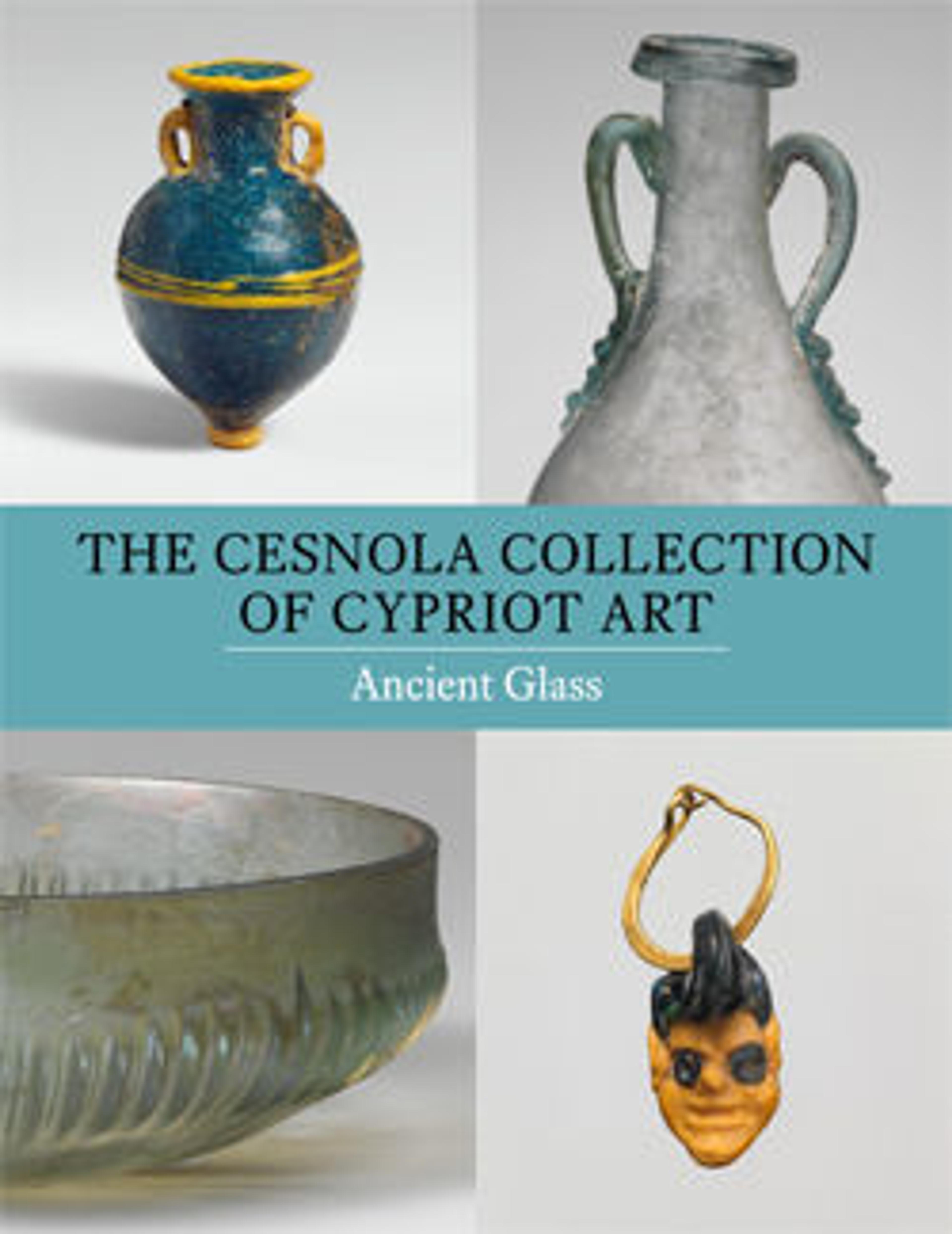Glass amphoriskos (perfume bottle)
Translucent deep turquoise blue, with opaque yellow handles, base knob, and trails.
Short, outsplayed rim disk, forming funnel-shpaed mouth; cylindrical neck; piriform body; applied, solid knob base, slightly concave on bottom; two small ear-shaped ring handles applied to top of body and neck.
Thick, unmarvered trail applied to outer lip of rim; two trails wound horizontally around center of body, forming three uneven lines.
Intact; some pinprick bubbles; dulling and patches of iridescent brownish weathering.
During the fifth century B.C., the colors of Mediterranean Group I vessels expanded from blue or opaque white to include other colors, such as dark green, golden brown, and opaque brick red. This amphoriskos is also unusual in that the handles match the trail decoration, not the color of the vessel itself.
Short, outsplayed rim disk, forming funnel-shpaed mouth; cylindrical neck; piriform body; applied, solid knob base, slightly concave on bottom; two small ear-shaped ring handles applied to top of body and neck.
Thick, unmarvered trail applied to outer lip of rim; two trails wound horizontally around center of body, forming three uneven lines.
Intact; some pinprick bubbles; dulling and patches of iridescent brownish weathering.
During the fifth century B.C., the colors of Mediterranean Group I vessels expanded from blue or opaque white to include other colors, such as dark green, golden brown, and opaque brick red. This amphoriskos is also unusual in that the handles match the trail decoration, not the color of the vessel itself.
Artwork Details
- Title: Glass amphoriskos (perfume bottle)
- Period: Classical
- Date: 5th century BCE
- Culture: Greek, Eastern Mediterranean
- Medium: Glass; core-formed, Group I
- Dimensions: 2 1/4 × 1 7/16 in. (5.7 × 3.6 cm)
Diam. of rim: 7/8 in. (2.2 cm) - Classification: Glass
- Credit Line: The Cesnola Collection, Purchased by subscription, 1874–76
- Object Number: 74.51.326
- Curatorial Department: Greek and Roman Art
More Artwork
Research Resources
The Met provides unparalleled resources for research and welcomes an international community of students and scholars. The Met's Open Access API is where creators and researchers can connect to the The Met collection. Open Access data and public domain images are available for unrestricted commercial and noncommercial use without permission or fee.
To request images under copyright and other restrictions, please use this Image Request form.
Feedback
We continue to research and examine historical and cultural context for objects in The Met collection. If you have comments or questions about this object record, please contact us using the form below. The Museum looks forward to receiving your comments.
